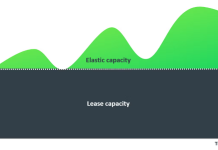In B2B services, the ability to move fast and smart is more than a competitive advantage; it has become a necessity. Operational agility is what allows service providers to meet shifting client priorities, adjust to real-time changes, and deliver consistent outcomes without getting stuck in process quicksand.
We often talk about agility in product development or marketing strategy, but it’s just as critical in service delivery. In high-stakes enterprise environments where timelines are tight, expectations are high, and priorities change frequently, agility might be the most important thing you’re not measuring.
Agility vs. Efficiency: You Need Both, But Don’t Confuse Them
Efficiency and agility are often lumped together, but they serve different purposes. Efficiency is about doing things right – standardization, repeatability, minimal waste. Agility is about doing the right things, even when the situation changes.
Many B2B organizations over-index on efficiency. They build rigid SOPs, automated workflows, and approval chains designed to protect consistency. But when something shifts (and in enterprise relationships, something always shifts), those same systems can become barriers.
You can have the best process on paper, but if it can’t bend when a client changes direction, it becomes a liability. Agility isn’t the opposite of structure; rather, it’s structure built for movement. In a complex client environment, “good enough now” often beats “perfect too late.” Efficiency helps you survive. Agility helps you grow.
Where Agility Shows Up in Enterprise Programs
Operational agility shows up long before there’s a crisis or an opportunity. It’s built into how you design and manage your client programs from the start:
- Onboarding and ramp-up flexibility: Can you tailor processes without compromising performance or speed?
- Rapid iteration: Can you adapt quickly when client feedback rolls in mid-project?
- Scalable resources: Can you increase or reduce support based on changing demand?
- Global and local dynamics: Can you balance centralized standards with regional nuances?
- Change readiness: When a client restructures or rolls out new systems, how quickly can your team pivot without sacrificing quality?
The most agile organizations don’t just respond to change, they anticipate it.
The Cost of Inflexibility
When operations are rigid, cracks start to show. Deadlines slip, communication lags, and deliverables miss the mark. Clients begin to question whether your team is aligned to their needs or simply following procedure.
Inflexibility doesn’t just slow you down; it erodes trust. It limits your ability to innovate, test new ideas, or move on emerging opportunities. The cost isn’t always immediate, but it compounds over time, from missed revenue to strained relationships, and an inability to evolve alongside your clients. The truth is, if you can’t adapt, you can’t grow.
Building Agile Operational Models
Real agility starts with mindset. It’s not a tool or a platform — it’s a way of working.
Here are a few key practices that help build an agile operational foundation:
- Align across functions. Sales, service, operations, and tech all need shared visibility and goals. Silos make agility impossible.
- Empower people to lead change. Give your teams permission to question the process and adjust when needed.
- Create feedback loops. Ongoing input from clients and frontline staff helps you spot issues and adapt early.
- Build flexible processes. Operational playbooks should provide structure without being set in stone.
Agility Is a Partnership Mindset
The best enterprise relationships aren’t built on flawless execution. They’re built on flexibility, responsiveness, and a shared commitment to progress. Strong partnerships evolve over time, and agility is what makes that evolution possible.
Agility isn’t reactive. It’s proactive adaptability. It’s how you stay aligned with your clients, even as priorities shift. It’s also what separates organizations that simply survive from those that grow and lead.
As you look at your own operations, ask yourself: Where are we prioritizing efficiency when we should be prioritizing agility? The answer might reveal the next big opportunity to strengthen your client partnerships and future-proof your success.





